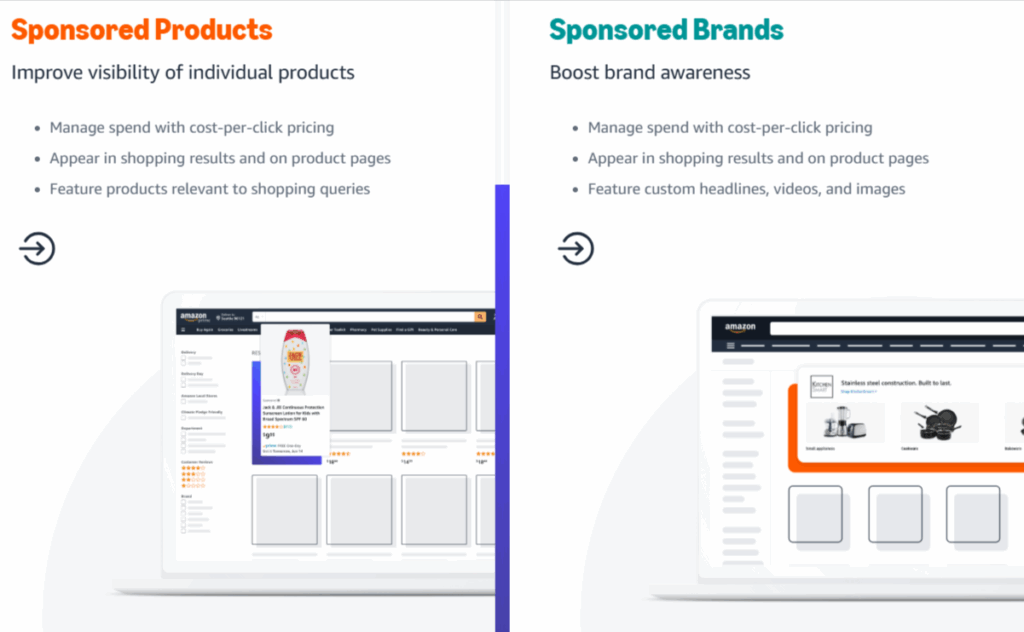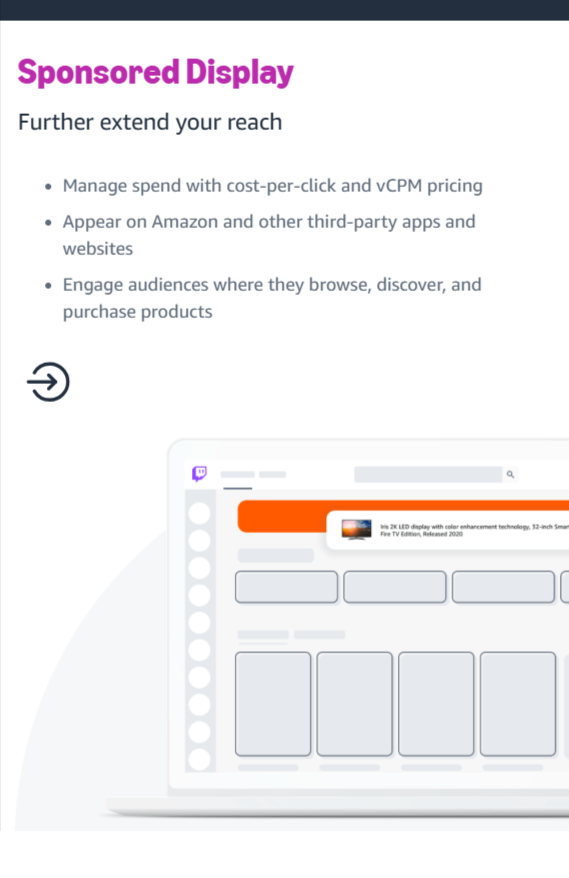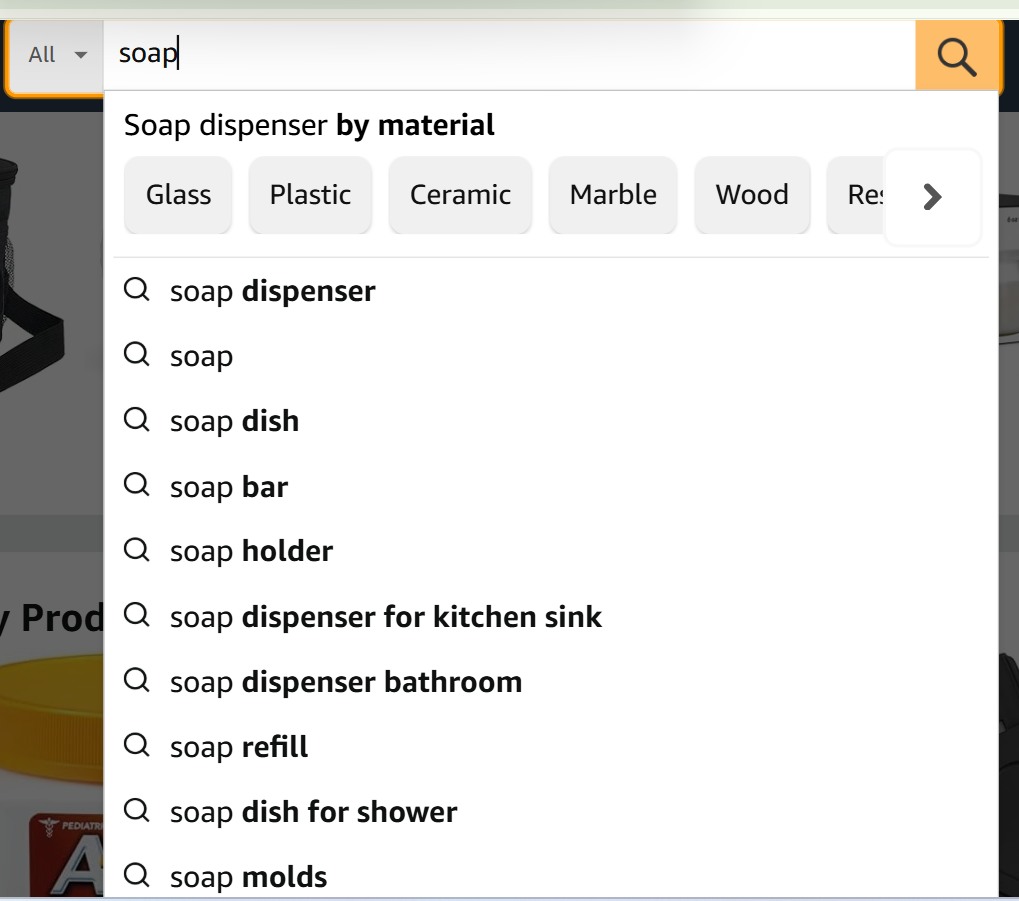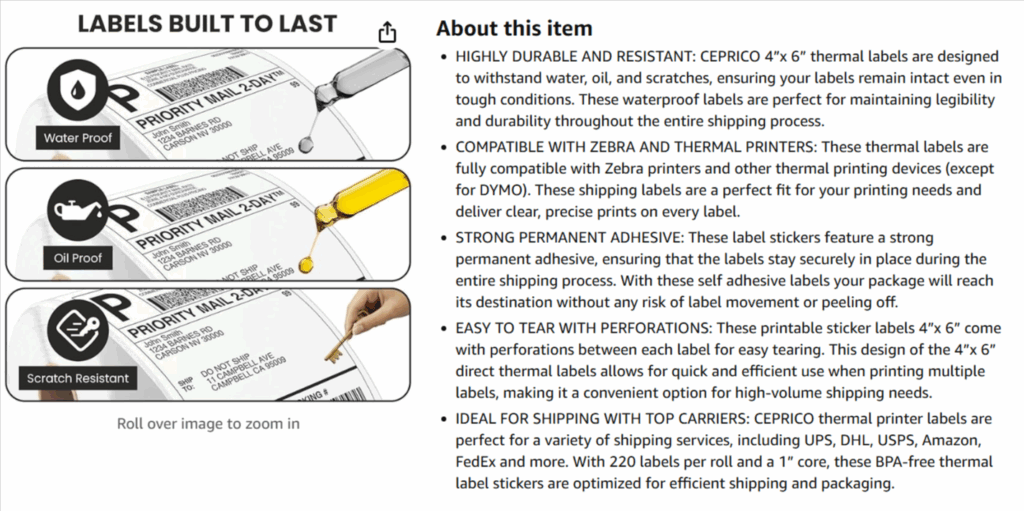
Running Amazon PPC campaigns without a solid plan is like shooting arrows blindfolded—you might get lucky occasionally, but you’ll likely waste valuable time and money. Whether you’re just launching your first ad campaign or looking to refine your current strategy, having a clear, organized checklist can help you avoid costly mistakes and drive meaningful results.
This comprehensive Amazon PPC checklist walks you through everything you need to effectively launch, manage, and improve your ad campaigns. From boosting product visibility and lowering ACoS to increasing overall sales, this guide ensures your advertising budget works smarter, not harder. Ready to make every ad dollar count? Let’s dive in!
1. Set up your campaign correctly
The success of your Amazon PPC efforts begins with a properly configured campaign. Laying a strong foundation helps avoid wasted spend and improves your chances of long-term profitability.
Start by selecting the most suitable ad type for your goals:

- Sponsored Products – Ideal for promoting individual products and improving visibility on search results.
- Sponsored Brands – Great for driving brand recognition and showcasing multiple products together.
- Sponsored Display – Useful for retargeting and reaching relevant shoppers across Amazon and beyond.

Organize your campaigns strategically:
- Avoid putting all your products into a single campaign.
- Group items by category, type, or shared goals.
- Separate match types into different campaigns (Exact, Phrase, Broad) for better spend control and performance tracking.
Set a realistic budget:
- Base it on your category’s competitiveness and your overall advertising goals.
- For highly competitive niches, consider starting with a higher budget to give Amazon’s algorithm room to optimize.
Choose your bidding strategy:
- Dynamic bidding – Let Amazon adjust your bids up or down based on the likelihood of a conversion.
- Fixed bidding – Keeps your bids stable, offering more control over your spend.
Track essential performance metrics from day one:
- ACoS (Advertising Cost of Sales)
- CTR (Click-Through Rate)
- Conversion Rate
A campaign built without careful structure can quickly exhaust your budget without delivering results. Taking the time to set things up correctly from the beginning can save you money and boost long-term performance.
2. Do proper keyword research
Amazon Keyword research is the heart of every successful Amazon PPC campaign. If you’re targeting irrelevant or low-converting keywords, you’re essentially paying for traffic that won’t convert. Instead, focus on identifying high-intent, relevant search terms that align with buyer behavior.

Start by using the right tools and data sources:
- Leverage Amazon’s Search Term Report to see which keywords are actually generating clicks and sales.
- Use keyword research tools like Helium 10, Jungle Scout, or SellerApp to uncover search trends and competitor insights.
Aim for a balance between keyword types:
- Broad Match – Great for discovering new keyword variations and search terms.
- Phrase Match – Useful for targeting search queries with specific word order and relevant modifiers.
- Exact Match – Best for zeroing in on proven, high-performing keywords and maintaining tighter budget control.
Additional keyword research tips:
- Analyze competitor product listings to identify the keywords they rank for and use them to your advantage.
- Incorporate long-tail keywords to target more specific search intents with less competition.
- Regularly add negative keywords to exclude irrelevant searches and avoid wasting ad spend.
Remember, keyword research isn’t something you do once and forget. It’s a continuous process—monitor performance, identify underperformers, and refresh your keyword list as trends shift. The right keywords drive targeted traffic, better conversions, and ultimately, more profitable campaigns.
Read More: How Amazon PPC Can Increase Product Sales?
3. Optimize your product listing first
Before you invest in Amazon PPC ads, make sure your product listing is polished and conversion-ready. Advertising can drive traffic, but if your listing doesn’t persuade shoppers to buy, that traffic turns into wasted spend.

Here’s what to focus on when optimizing your listing:
- Title
- Make it clear and easy to read
- Include primary keywords naturally
- Avoid keyword stuffing or unnecessary words
- Bullet Points
- Emphasize key features and product benefits
- Use concise, buyer-focused language
- Highlight what sets your product apart
- Images & Video
- Upload high-resolution images with white backgrounds
- Add lifestyle photos and Amazon infographic images to show use cases
- Include a short product video for better engagement and trust
- A+ Content (Enhanced Brand Content)
- Use engaging visuals and detailed sections to educate shoppers
- Add brand story and comparison charts (if applicable)
- Helps improve time on page and conversion rates
- Backend Search Terms
- Fill in relevant keywords that didn’t fit in your visible copy
- Avoid repetition and include synonyms or alternate spellings
A strong product listing not only boosts your conversion rate but also supports better organic rankings and lowers your ACoS. If your listing isn’t compelling, even the best PPC strategy won’t deliver strong ROI. Get your listing in shape first, then fuel it with ads.
4. Select the right bidding strategy
Your bidding strategy directly affects how effectively you use your advertising budget. Amazon provides three bidding options, each with its own strengths depending on your goals and campaign type.
Here are the main bidding strategies to consider:
- Fixed Bids
- Amazon keeps your bid amount unchanged
- Offers maximum control over spending
- Ideal for advertisers who want predictable costs
- Dynamic Bids (Down Only)
- Amazon reduces your bid when a conversion is unlikely
- Helps prevent overspending on low-performing clicks
- Suitable for campaigns focused on cost efficiency
- Dynamic Bids (Up & Down)
- Amazon raises your bid for high-conversion opportunities and lowers it when chances are low
- Optimized for conversions, but can increase costs
- Great for competitive niches or aggressive growth strategies
Best Practices:
- Monitor CPC (Cost-per-click) and conversion rates closely to make data-driven bid adjustments
- Test different strategies to see which delivers the best results for your products and goals
- Start conservatively and scale bids once you have solid performance data
Choosing the right bidding model can help stretch your budget further while improving results. Whether you prefer full control or want Amazon to optimize for you, understanding these options is key.
Read More: Tips for Amazon PPC Keyword Bidding Strategy
5. Find negative keywords
Negative keywords are crucial for improving ad performance and reducing wasted spend. They help prevent your ads from appearing for irrelevant or low-converting search terms.
How to find and use negative keywords effectively:
- Analyze the Search Term Report
- Identify search terms that get clicks but no conversions
- Spot trends in irrelevant or misleading queries
- Filter out irrelevant traffic
- Exclude keywords that don’t align with your product positioning
- For premium products, remove terms like “cheap,” “free,” or “budget.”
- Use both exact and phrase match types
- Exact match negatives block specific unwanted terms
- Phrase match negatives block search terms containing a specific sequence of words
- Update regularly
- Negative keyword management is ongoing
- Continually refine your list based on performance data and evolving search trends
Implementing a strong negative keyword strategy ensures your ads reach the right audience. This not only improves your return on ad spend (ROAS) but also lowers ACoS by reducing unqualified traffic.
6. Monitor and optimize performance
Launching PPC ads without ongoing monitoring is risky—you may end up spending a lot without seeing results. To run a profitable Amazon PPC campaign, you must regularly review and refine your strategy based on real data.
Here’s what to keep an eye on:
- ACoS (Advertising Cost of Sales) & TACoS (Total Advertising Cost of Sales)
- A high ACoS indicates you’re spending too much to make a sale
- TACoS helps assess how ads impact overall sales, not just ad-attributed revenue
- Reduce bids or pause underperforming keywords to bring these metrics down
- CTR (Click-Through Rate) & Conversion Rate
- Low CTR? Your ad may not be appealing—improve your main image or title
- Low conversion rate? Look into enhancing your product listing and pricing
- Search Term Reports
- Identify which search terms lead to conversions
- Pause or add negative keywords for terms that generate clicks but no sales
- Bid Adjustments
- Raise bids on profitable keywords that convert consistently
- Lower bids or pause those that are draining your budget without returns
Remember: PPC campaigns require ongoing attention and refinement. It’s not a one-time task. If managing it yourself becomes overwhelming, consider working with a professional Amazon PPC agency to help streamline the process and improve your ad performance over time.
7. Use auto & manual campaigns strategically
To get the most out of your Amazon PPC efforts, it’s essential to use both automatic and manual campaigns. Each campaign type offers unique advantages, and when used together, they create a well-rounded strategy that balances discovery with control.
Here’s how to use them effectively:
- Automatic Campaigns
- Ideal for discovering new keyword opportunities
- Amazon automatically matches your ads with shopper search terms
- Monitor which keywords generate clicks and conversions
- Manual Campaigns
- Use broad, phrase, and exact match types to refine targeting
- Allows you to adjust bids based on keyword performance
- Offers more control over which terms trigger your ads
- Transfer High-Performing Keywords
- Move converting terms from auto to manual campaigns
- Helps direct the budget toward keywords with proven success
- Improves overall efficiency and return on ad spend (ROAS)
- Organize by Match Type
- Separate ad groups or campaigns for broad, phrase, and exact matches
- Makes it easier to analyze performance and optimize accordingly
By running both auto and manual campaigns in tandem, you uncover new keyword insights while maintaining control over your ad spend. This dual strategy is key to scaling your PPC campaigns profitably.
8. Test different ad placements
Where your ad appears on Amazon can significantly impact its performance. Testing different placements helps you find the most cost-effective spots that deliver the highest return.
Amazon offers three primary ad placements:
- Top of Search (First Page)
- Offers maximum visibility and typically the highest conversion rates
- Usually comes with a higher cost-per-click (CPC) due to competition
- Ideal for top-performing keywords with strong ROI
- Product Pages
- Ads appear on the detail pages of similar or competing products
- Great for capturing market share from competitors
- Useful for targeting related products in your niche
- Rest of Search
- Lower visibility and CPC, but still capable of generating sales
- Often performs well for long-tail or niche keywords
- Good option for staying profitable with a limited budget
Tips for maximizing placement performance:
- Review Amazon’s placement reports to identify which placements convert best
- Use bid adjustments to increase your chances of showing in high-performing spots like top-of-search
- Continuously test and tweak placements to find the sweet spot between cost and conversions
By testing and optimizing ad placements, you can stretch your ad budget further and improve campaign efficiency.
9. A/B test ad creatives and strategies
A/B testing is a powerful way to refine your Amazon PPC campaigns by comparing different ad elements and strategies. Instead of relying on assumptions, it allows you to make informed, data-driven improvements.
Key areas to A/B test in your campaigns:
- Ad headlines and images
- Especially for Sponsored Brands, test various messaging and visuals to see which drives higher click-through rates.
- Bidding strategies
- Compare performance between fixed bids and dynamic bidding (up & down) to understand which yields better ROI.
- Keyword match types
- Run campaigns using broad, phrase, and exact match to see which delivers the best conversions for your goals.
- Ad placement adjustments
- Test different bid adjustments for top-of-search, product pages, and rest-of-search to identify the most cost-effective position.
Best practices for A/B testing:
- Run tests for a minimum of two weeks to gather meaningful data.
- Monitor key metrics like CTR, ACoS, conversion rate, and TACoS.
- Scale up the strategies and creatives that show the strongest performance.
Continuous testing ensures your ads evolve with shopper behavior and market trends, keeping your campaigns competitive and efficient.
10. Control the budget and avoid wasted spend
Proper budget control is crucial for running profitable Amazon PPC campaigns. Without careful oversight, it’s easy to overspend on ads that don’t deliver results. Focus on maximizing returns by spending smarter, not just more.
Tips for effective budget management:
- Set daily budgets wisely
- Begin with a modest amount and increase gradually based on actual performance data.
- Cut back on underperforming keywords
- Reduce bids or pause keywords that generate clicks without conversions.
- Leverage negative keywords often
- Block irrelevant terms to prevent spending on unqualified traffic.
- Track ACoS and RoAS consistently
- A high ACoS means it’s time to refine targeting or adjust your bidding strategy.
- Reallocate funds to top-performing campaigns
- Move your budget toward campaigns and ad groups delivering the best return.
By actively managing your ad spend, you’ll ensure each dollar contributes to real growth, boosting conversions while keeping your costs in check.
11. Scale successful campaigns
After identifying campaigns that consistently perform well, the next step is scaling them strategically to boost your sales without inflating your ad spend. Scaling should be data-driven, not just increasing budgets blindly.
Tips for scaling successfully:
- Raise budgets gradually on profitable campaigns
- Slowly increase funding to maximize reach without impacting efficiency.
- Expand keyword coverage
- Introduce keyword variations, long-tail phrases, and complementary search terms.
- Bid higher on top-performing keywords
- Improve ad placements for the keywords already delivering strong results.
- Try Amazon Sponsored Display ads
- Retarget previous visitors and show up on competitor product pages.
- Explore new marketplaces
- If you sell internationally, run test campaigns in additional regions.
Scaling is most effective when done methodically—track results closely, build on success, and avoid aggressive changes that could hurt performance.
12. Review and refine regularly
Amazon PPC campaigns require continuous optimization to stay competitive and cost-effective. As customer behavior, competitors, and trends shift, your strategies need to adapt.
Ongoing optimization checklist:
- Review search term reports weekly
- Spot valuable new keywords and cut out underperformers.
- Adjust bids based on real-time data
- Increase bids on high-converting terms and decrease spend on low-performing ones.
- Monitor key performance metrics
- Keep an eye on ACoS, CTR, and conversion rates to measure profitability.
- Refine your negative keyword list
- Continuously exclude irrelevant search terms to improve efficiency.
- Refresh ad creatives
- Test new visuals, headlines, or placements when performance starts to drop.
Sustained success with Amazon PPC comes from consistent analysis and improvement—staying agile ensures your campaigns keep delivering strong returns.
What if your Amazon PPC still isn’t working? Here’s how to fix it.






